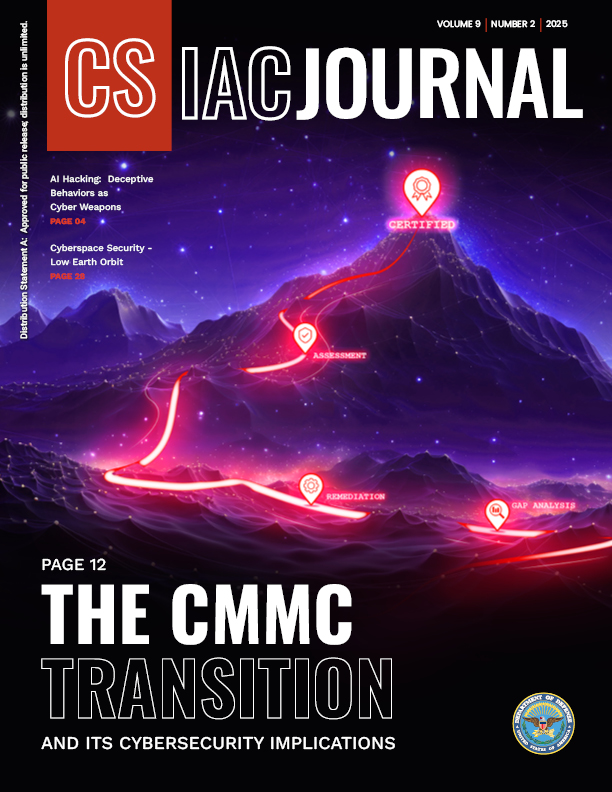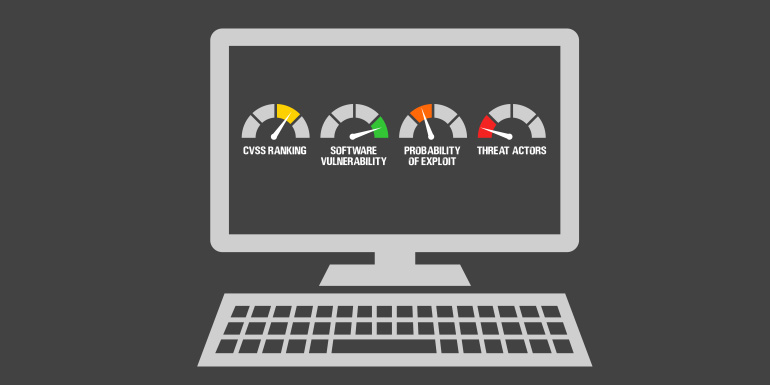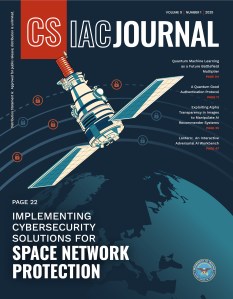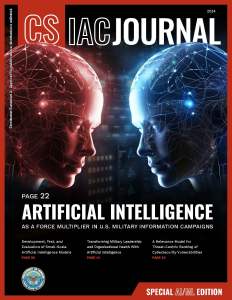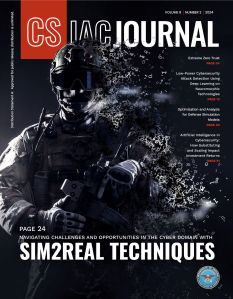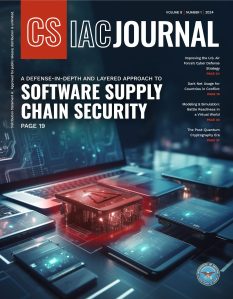Newest Journal Release
Latest Articles
Cyberspace Security – Low Earth Orbit
As satellites become increasingly integral to global communication, navigation, and surveillance, targeting their vulnerabilities by malicious actors to disrupt services or gain sensitive information will be imminent to maintain cyberspace security.
Read MoreThe CMMC Transition and Its Cybersecurity Implications
This article provides information on the U.S. Department of Defense (DoD) Cybersecurity Maturity Model Certification (CMMC) program and where it originates.
Read MoreAI Hacking: Deceptive Behaviors as Cyber Weapons
In the perpetually evolving theater of modern warfare, artificial intelligence (AI) has emerged as a transformative force, promising unparalleled advancements across a spectrum of military applications.
Read MoreLantern: An Interactive Adversarial AI Workbench
Lantern, an innovative adversarial artificial intelligence (AI) workbench with unique features, is presented in this article. Lantern allows users to evaluate adversarial attacks quickly and interactively against artificial intelligence (AI) systems to protect them better.
Read MoreExploiting Alpha Transparency in Images to Manipulate AI Recommender Systems
This article examines the vulnerability of artificial intelligence (AI) systems to alpha transparency attacks through a simulated cyber tabletop scenario. The research demonstrates how manipulated images with hidden content in alpha layers can exploit the discrepancy between human and machine perception and compromise various AI-driven technologies from social media algorithms to critical infrastructure analysis.
Read MoreImplementing Cybersecurity Solutions for Space Network Protection
This article focuses on improving the security of space networks by using multiple layers of protection to guard against cyberthreats and ensure the systems remain strong and reliable. It highlights the need for new encryption methods for smaller satellites, which have limited hardware capabilities, to keep their data safe. The study emphasizes the defense-in-depth model, which involves using several independent security measures to protect against different types of attacks.
Read MoreA Quantum Good Authentication Protocol
This article presents a novel network protocol that incorporates a quantum photonic channel for symmetric key distribution, a Dilithium signature to replace factor-based public key cryptography for enhanced authentication, security, and privacy. The protocol uses strong hash functions to hash original messages and verify heightened data integrity at the destination.
Read MoreQuantum Machine Learning as a Future Battlefield Multiplier
Today’s battlefield includes all types of equipment, manned and unmanned. However, in the future, battles will be relatively quiet, yet lightning fast in operations and outcomes. For example, in a remote training site, the U.S. Army is practicing the use of newly developed quantum machine-learning (QML)-enabled aerial and ground manned/unmanned systems. The form factor for the QML has decreased by orders of magnitude such that QML algorithms execute on micropayloads hosted on hypersonic platforms. Since opposing forces have similar capabilities, the goal is to deplete each other’s combat power in nanoseconds. Spread over thousands of kilometers in all directions, the QML-driven battle ends in less than five minutes, leaving thousands of drones and robotic vehicles with multiple multiprocessors decimated and neutralized.
Read MoreA Relevance Model for Threat-Centric Ranking of Cybersecurity Vulnerabilities
The relentless process of tracking and remediating vulnerabilities is a top concern for cybersecurity professionals. The key challenge is trying to identify a remediation scheme specific to in-house, organizational objectives. Without a strategy, the result is a patchwork of fixes applied to a tide of vulnerabilities, any one of which could be the point of failure in an otherwise formidable defense. Given that few vulnerabilities are a focus of real-world attacks, a practical remediation strategy is to identify vulnerabilities likely to be exploited and focus efforts toward remediating those vulnerabilities first.
Read MoreTransforming Military Leadership and Organizational Health With Artificial Intelligence
Artificial intelligence (AI) fuels not only the technological advancements in our businesses and homes but also redefines the operational frameworks of governments, military, and the broader societal constructs. The essence of this transformative power, however, finds its most compelling narrative in leadership and organizational health, where machine learning (ML), a subset of AI, plays a pivotal role. AI/ML can be used to support leaders in their efforts to manage and monitor initiatives and drive decisions. ML algorithms using continuous data collection activities can assist and support organization’s leaders through understanding if implemented initiatives are impacting operations by improving staff cross-collaboration and productivity while improving product and service innovation. Using predictive analytics to analyze trending data to predict future outcomes, leaders can determine if staying the course or pivoting in a certain direction is needed.
Read More

